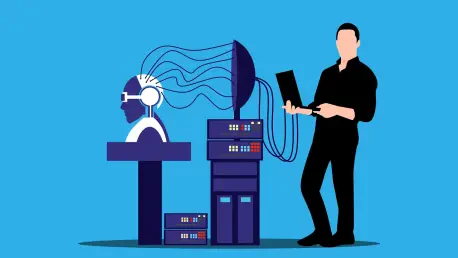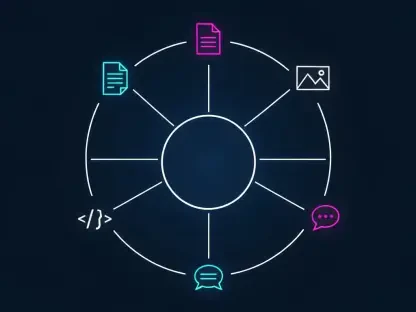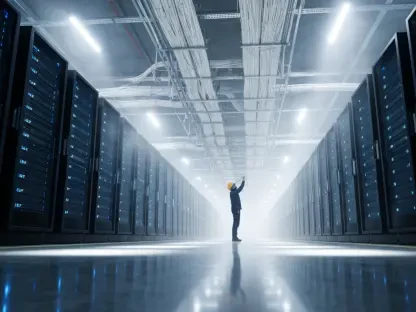The rapid advancement of artificial intelligence technology has stirred a significant shift in the software engineering landscape, with professionals like Shawn K. experiencing the repercussions firsthand. Once earning a substantial $150,000 annually as a software engineer, Shawn now finds himself grappling with AI-driven displacement, a stark reality that’s reshaping the tech workforce. This evolution presents existential challenges to those in the industry, akin to Shawn, who once endured workforce reductions during the 2008 financial crisis and the pandemic. Despite possessing two decades of invaluable experience, Shawn has faced disappointingly scarce opportunities amidst his job hunt, compounded by automated recruitment processes that diminish his visibility.
AI’s Growing Dominance in Software Development
A Surge in Automation
Artificial intelligence has rapidly become a cornerstone in software development, taking on increasingly pivotal roles once reserved for human engineers. Dario Amodei, CEO of Anthropic, forecasts that AI will assume most coding responsibilities by the end of the year, signifying a remarkable shift toward automation in tech industries. The implications of such advancements are profound, presenting a scenario where AI systems generate nearly all code, leading to a widespread reduction in the workforce. This trend is exemplified in Shawn’s story, where AI’s involvement in recruiting extends beyond efficiency improvements, overshadowing personal connections and veteran expertise in the hiring process.
The increasing reliance on AI solutions in the tech sector has introduced a paradigm shift in employment strategies. Organizations are progressively favoring AI’s cost-effectiveness, achieving productivity gains at a substantially reduced expense, albeit at the cost of human job roles. Shawn’s predicament, living in a modest RV trailer and resorting to alternative income sources like DoorDash deliveries and selling household items, reflects the dire financial reality many tech professionals face. These circumstances underscore a notable societal concern: while AI holds transformative potential, its disruptive impact on employment challenges conventional workforce dynamics.
Unveiling Financial and Educational Barriers
Even amidst daunting challenges, the prospect of further education as a solution to evolving AI landscapes remains alluring, though financially burdensome for many. Shawn, like numerous affected professionals, has considered upskilling or reskilling, yet confronts formidable barriers posed by educational costs. These obstacles hinder seamless transitions into emerging domains, limiting access to avenues that could otherwise alleviate the repercussions of AI-driven displacement. Such financial hurdles emphasize a broader need for accessible educational initiatives tailored to tech professionals seeking adaptation in an AI-centric environment.
Government bodies, educational institutions, and tech organizations must collaborate to develop solutions that mitigate educational barriers and facilitate transitions. Addressing these challenges requires proactive measures, including scholarship programs, affordable courses, and immersive AI training aimed at equipping displaced workers with requisite skills. Enhanced access to resources and specialized learning opportunities can empower professionals like Shawn to navigate changes effectively, fostering integration into new roles aligning with AI advancements.
Reimagining Business Strategies Amidst AI Evolution
Balancing Efficiency and Workforce Dynamics
Shawn K.’s narrative raises pertinent concerns regarding business strategies that leverage AI advancements to optimize efficiency, often prioritizing cost reduction over maintaining human expertise. This strategic focus fosters debate on achieving equilibrium where AI serves to enhance productivity without extensive workforce downsizing. Organizations must navigate the tension between maximizing profits through automation and sustaining valuable human contributions, ensuring that AI complements rather than supplants existing expertise.
The transformative capabilities of AI should ultimately enhance the productivity and potential of software engineering teams rather than solely drive market competition. A balanced approach necessitates redefining roles and responsibilities to incorporate AI’s strengths while valuing human creativity, problem-solving, and innovation. Leadership within tech enterprises must explore adaptive strategies that integrate AI tools with workforce insights, fostering environments where technology and human skills coalesce to drive industry evolution.
Embracing Collaborative Innovations
Embracing AI as a tool for collaborative innovation underscores the necessity for proactive strategies that safeguard employment and empower professionals. Shawn’s experiences exemplify the pressing need to address societal shifts by implementing adaptable business models focused on integration rather than displacement. Engaging in dialogues surrounding AI’s role in software engineering allows stakeholders to explore innovative solutions that prioritize workforce resilience.
Strengthening collaborations between AI developers, business leaders, and educational platforms can pave the way for a harmonious integration that enriches the tech industry’s fabric. This approach encourages experiential learning, fosters professional growth, and nurtures adaptability, ensuring software engineers remain integral contributors despite AI’s expanding presence. By embracing AI inclusively, cultivating diverse perspectives, and encouraging innovation-driven career paths, the trajectory of software engineering professionals can be redefined in alignment with emergent technological transformations.
Charting New Paths for Software Engineers
The swift progress in artificial intelligence technology has ushered in a profound transformation in the software engineering environment, affecting professionals like Shawn K. directly. Formerly pulling in an impressive $150,000 per year as a software engineer, Shawn now confronts a new reality of AI-driven job displacement, a daunting development reshaping the tech industry. This transformation brings existential challenges to individuals like Shawn, who weathered the storms of workforce cuts during both the 2008 financial crisis and the pandemic. Despite accumulating two decades of rich experience, Shawn faces a discouraging scarcity of job opportunities in his search, exacerbated by recruitment processes increasingly dominated by automated systems that limit his exposure. Shawn’s story underscores a growing concern among tech professionals about their future role in a rapidly AI-evolving industry, illustrating the battle of experienced engineers to remain relevant amid technological shifts.









